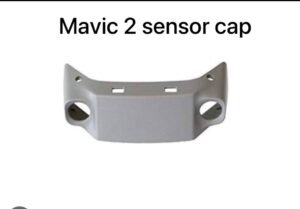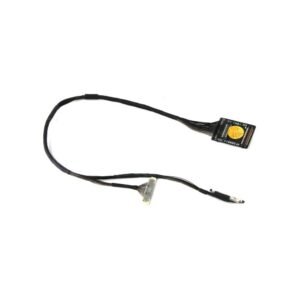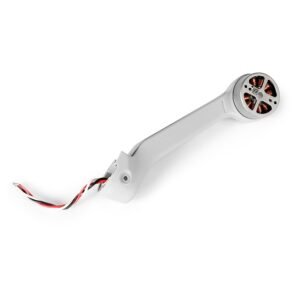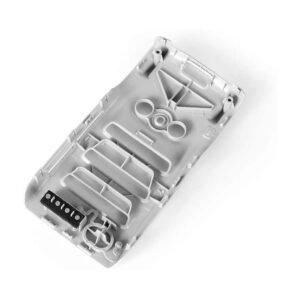Help Center
Help Center
₹28,999.00 Original price was: ₹28,999.00.₹26,999.00Current price is: ₹26,999.00. inc. Gst
Product Overview
| Brand | DJI (OEM) |
| Model | Gimbal Camera Assembly |
| Product Type | Gimbal Camera Unit |
| Compatibility | DJI Air 2S |
| Sensor | 1-inch CMOS, 20MP |
| Video Resolution | Up to 5.4K at 30fps, 4K at 60fps, 1080p at 120fps |
| Gimbal Stabilization | 3-axis (tilt, roll, pan) |
| Mechanical Range | Tilt: -135° to 45°, Roll: -45° to 45°, Pan: -100° to 100° |
| Controllable Range | Tilt: -90° to 0° (default), Pan: -80° to 80° |
| Max Tilt Speed | 100°/s |
In stock
The DJI Air 2 Gimbal is the heart of your drone’s camera movement system. It allows your camera to stay stable in the air, move in all directions, and capture smooth and clear video footage even when the drone is flying fast or turning sharply. If your drone’s footage has become shaky or the camera is not responding properly, it’s likely the gimbal needs to be replaced. This gimbal is specially made for the DJI Air 2 and comes as a complete unit with the yaw, pitch, and roll motors already attached. It’s designed for perfect fit, smooth stabilization, and easy installation so your drone is back in action quickly.
This gimbal includes yaw, pitch, and roll motors that work together to give your camera full movement control. It allows the camera to move left and right (yaw), tilt up and down (pitch), and stay level even when the drone tilts (roll). These three motions help the drone capture extremely stable video, no matter how fast it flies or how windy the weather is. Whether you’re panning across a sunset or following a moving car, the gimbal keeps your camera steady. This balance ensures your footage stays cinematic and professional-looking at all times.
The gimbal comes with all its internal motors already installed, which means you don’t need to build or assemble anything. These motors are placed exactly how they were in the original DJI Air 2, with the same wiring, screws, and connectors. This makes the replacement process faster and much safer, especially if you’re not an expert in drone repair. Because it’s made by DJI, you get the same high-level accuracy and smoothness that your drone had when it was brand new. Every movement is natural and well-calibrated right out of the box.
The main purpose of a gimbal is to stop the camera from shaking or tilting while flying. This DJI Air 2 gimbal does exactly that—it stabilizes the footage so well that even when the drone is flying in circles or facing wind, your video stays sharp and smooth. It absorbs the vibrations and sudden movements of the drone, so your images come out clear and focused. This kind of stability is especially useful when shooting in low light or while using zoom, where even small shakes can ruin the shot.
This gimbal is made specifically for the DJI Air 2 and is not compatible with other drone models. That means every connection point, screw hole, and wire matches perfectly with your Air 2’s body. It fits into the drone’s front body slot with no extra tools or changes needed. Because of this tight compatibility, the gimbal does not cause any balance problems or calibration errors. When installed correctly, the drone recognizes it immediately and functions exactly like the original setup, with no drop in performance.
Installing the DJI Air 2 gimbal is a simple process if you follow the steps carefully. All wires are pre-attached to their correct ports, and the unit slots directly into the drone’s gimbal compartment. Once placed and secured with screws, the gimbal can be calibrated in the DJI Fly app with a few taps. This means you don’t need any advanced tools or technical knowledge to replace it. Within minutes, your drone will be ready to fly again with full camera control, giving you peace of mind and saving you time.
Turn off your drone and remove the battery completely before starting the replacement to avoid power issues.
Carefully remove the damaged gimbal by unscrewing it and gently unplugging the cable connections inside the gimbal housing.
Place the new gimbal into the same slot, making sure the wires and ports line up correctly, and secure it with the original screws.
Power on the drone and open the DJI Fly app, then select the gimbal auto-calibration option to adjust the camera’s movement.
Once calibration is complete, test the camera by tilting, rotating, and flying to make sure the gimbal responds smoothly and correctly.
Wipe the gimbal with a clean, dry microfiber cloth to remove fingerprints or dust from the outer casing and moving parts.
Avoid using any liquid or cleaner sprays directly on the gimbal as moisture may damage internal circuits or cause corrosion over time.
If dirt is stuck in the joints, use a soft brush or small air blower to remove it gently without putting pressure on the gimbal motors.
Hold the gimbal arm softly while cleaning so you don’t accidentally twist or dislodge its balanced structure while wiping.
Regularly clean the gimbal, especially after flying in areas with sand, dust, or near water, to maintain smooth rotation and clarity in footage.
Always use a gimbal cover or protector when storing or traveling with your drone to prevent the gimbal from moving or getting scratched.
Don’t overload the gimbal with third-party attachments like filters or lenses that are too heavy—they may stress the motors or break the arms.
After each flight, allow the drone and gimbal to cool down before putting it back in your bag, especially after flying in hot weather.
Avoid flying the drone in heavy rain, extreme cold, or strong winds, as these conditions may damage the gimbal or reduce its performance.
Regularly check the gimbal for loose wires or signs of wear and tear, especially if you fly often, so small problems can be fixed early.
Do:
Always calibrate the gimbal after replacing or reinstalling it to ensure smooth and accurate motion.
Handle the gimbal with clean hands and use anti-static tools if you’re replacing it yourself to avoid damaging internal parts.
Fly gently during your first few flights with a new gimbal to check its response and give it time to settle into position.
Keep the gimbal protected inside a padded drone case when not in use to avoid accidental impacts or bending.
Monitor the DJI Fly app for any warnings or calibration suggestions after gimbal installation or updates.
Don’t:
Don’t twist or force the gimbal arms by hand as this can damage the motor alignment or break the delicate components inside.
Don’t fly with a cracked or damaged gimbal as it can affect camera stability and may cause a crash if the camera shakes too much.
Don’t mix parts from other drone models—even if they look similar, they may not match and can cause errors or damage.
Don’t leave the drone under direct sunlight for too long as overheating can affect the gimbal’s motor response and shorten its life.
Don’t ignore unusual camera behavior like jerky movement or shaking—these are signs your gimbal may need service or recalibration.
If your DJI Air 2 footage has started to shake, or your camera isn’t rotating like it used to, this original DJI gimbal will bring everything back to normal. With its smooth motion, strong build, and perfect fit, your drone will fly and film like new again. Whether you’re filming a birthday party, a real estate shoot, or just flying for fun, a properly working gimbal makes a huge difference. Install it right, calibrate it once, and get back in the air with the stable footage you love.
| Specification | Details |
|---|---|
| Brand | DJI |
| Model | Gimbal Camera Assembly |
| Product Type | Gimbal Camera Unit |
| Compatibility | Specifically designed for DJI Air 2S drones |
| Sensor | 1-inch CMOS, 20MP effective pixels |
| Lens | 22mm equivalent focal length, fixed aperture f/2.8 |
| Video Capabilities | 5.4K at 30fps, 4K at 60fps, 1080p at 120fps |
| Gimbal Stabilization | 3-axis mechanical stabilization (tilt, roll, pan) |
| Mechanical Range | Tilt: -135° to 45°, Roll: -45° to 45°, Pan: -100° to 100° |
| Controllable Range | Tilt: -90° to 0° (default), Pan: -80° to 80° |
| Max Tilt Speed | 100°/s |
| Angular Vibration Range | ±0.01° |
| Features | Supports autofocus and manual focus, electronic rolling shutter, SmartPhoto, MasterShots, FocusTrack |
| Installation Requirements | Professional skills and tools are required for installation |
| Calibration | Post-installation gimbal calibration is necessary using professional software |
| Operating Temperature Range | -10°C to 40°C |
| Notes | Ideal for replacing damaged gimbal units; not recommended for novices |

In stock

In stock

In stock

In stock
Reviews
There are no reviews yet.